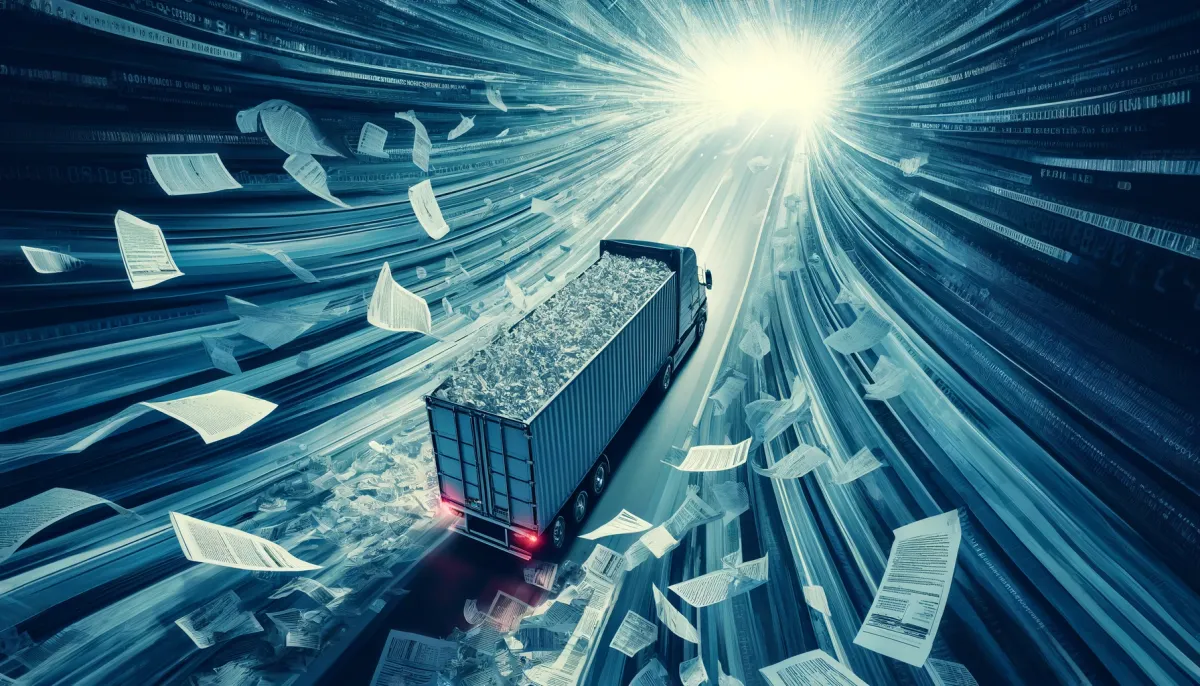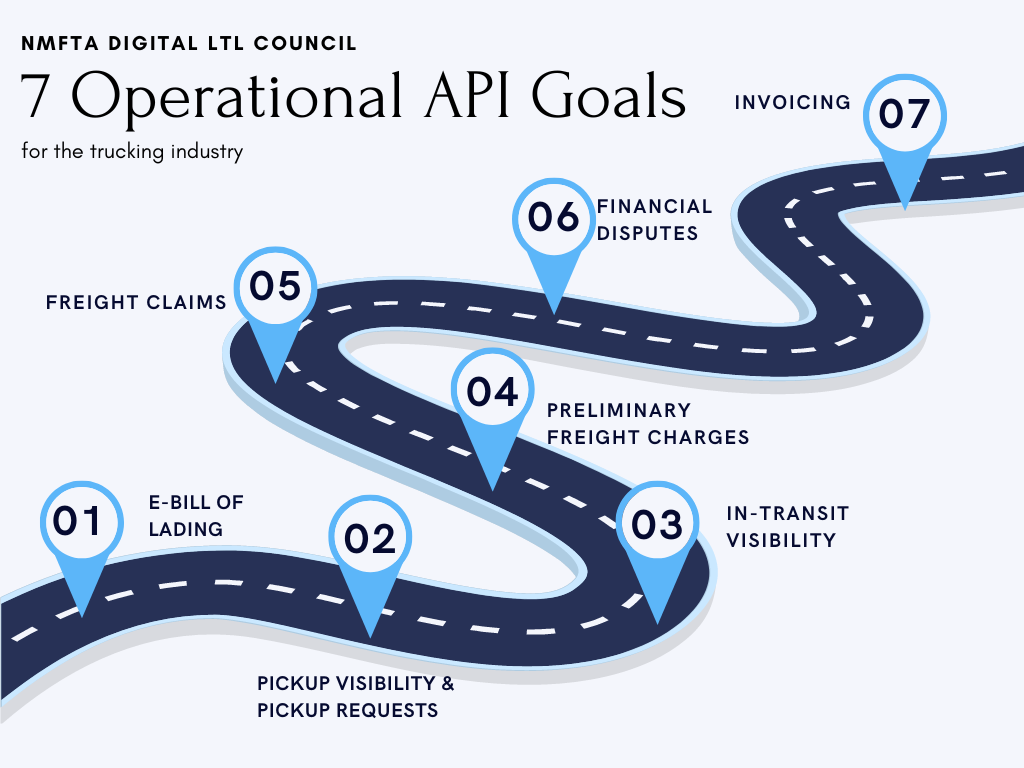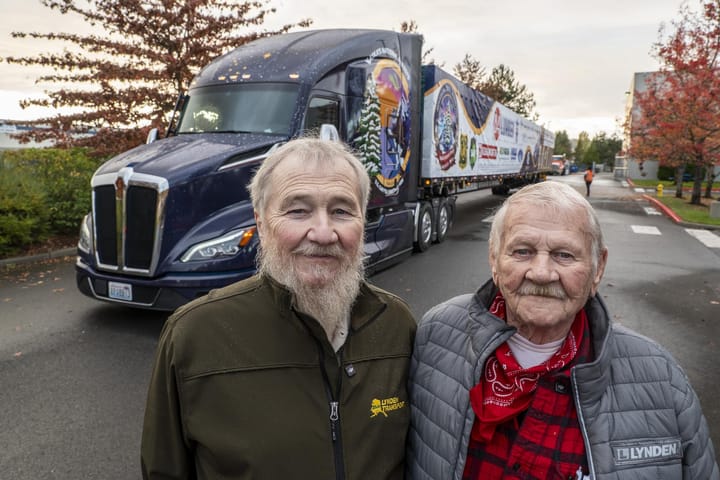Is the Trucking Industry Ready to Ditch Paper? NMFTA Thinks So
The trucking industry, long reliant on paper, is undergoing a major digitization push led by the NMFTA to save time, money, and improve efficiency.

By Alan Schmadtke, for The Inside Lane
For generations, people who used trucks to run their businesses faced a handful of unavoidable realities. Gas. Insurance. Drivers. Traffic. And: paperwork.
While the rest of the world has gone digital, paper still covers the trucking industry, from bills of lading to invoices to inventory to logbooks.
But it’s an image trucking leaders prefer to fade away like old ink.
The push toward digitization
Spearheaded by the National Motor Freight Traffic Association, the industry is hip-deep in a sweeping digitization effort, one designed to swap multiple paper trails for electronic records.
“Once people see how much time, effort and money they’ll save, I think they’ll get on board,” NMFTA COO Joe Ohr told The Inside Lane.
The NMFTA is sponsoring the Digital LTL Council, a cross-section of trucking stakeholders trying to answer the big question: What does a paperless trucking industry really look like?
“Anywhere between 50% and 75% reduced time on the billing side and much better communication throughout the process,” said Scott Sullivan, CIO and CFO at PITT OHIO, less-than-truckload (LTL) service provider. “But there is a lot of change management behavior [involved].”
Progressing past EDI
Perhaps astonishingly, the digitization of trucking started in the 1960s when the U.S. transportation industry developed and adopted EDI — electronic data interchange, a faster way for various systems to receive freight and shipping information electronically. The grocery and automotive industries were early adopters, seeing better ways to send and receive information, defray costs and gain better inventory management and more accurate accounting.
Sixty years later, EDI remains an integral part of trucking because so much is built on it, and it’s not going away soon. But trucking is hardly an electronic utopia. EDI is mostly one-way communication, and its use is fragmented. Too many companies prefer their own applications over a standard one.
Then came 2020. The COVID-19 pandemic shone a bright light on the necessity for better data exchanges. The trucking industry seemed to have learned its history lesson.
Many in the industry wonder why it took so long.
The example George Thellman uses is a truck that gets into an accident that causes a fire. A first responder asks the truck driver, “What are you hauling?” And the driver’s answer is: “It’s on the paper bill of lading in the truck . . . that’s burning.”
In fact, current regulations for a truck pulling hazardous materials are to have a full listing of those materials on paper and in the cab of the truck.
“Transportation is probably one of the last industries that take on full digital workflows,” says Thellman, director of business development and strategic relations for True TMS and a longtime digital logistics supporter. “Even the medical profession is all digital now.”
However, doctors, hospitals, imaging centers, insurance companies and other medical providers had no choice. The Health Insurance Portability and Accountability Act of 1996 (HIPAA) pushed the medical profession over the digital cliff, requiring certain standards of record keeping, privacy and security.
No similar trucking legislation is coming. Instead, the industry is working on an inside job. What started nearly a decade ago with representatives from PITT OHIO peer freightliners to build APIs (application programming interfaces). They made modest gains but not what they had hoped, Sullivan said.
Building the trucking API framework

In 2019, the NMFTA agreed to sponsor the initiative and brought together an organization, adding people and money to solve the issue. Five years later, the Digital LTL Council has a road map to build seven operations-related API instructions and two administrative ones, a start-to-finish track of trucking paperless-ness.
Eight of the top 10 revenue-generating carriers in America and seven other carriers have already adopted the council’s new bill of lading requirements, as have two large 3PLs, CH Robinson and Worldwide Express, Digital LTL Council Executive Director Paul Dugent told The Inside Lane.
Together, the stakeholders break into separate groups to figure out and document instructions for API developers. APIs allow one piece of software to communicate with another. One stakeholder can punch in instructions, and a recipient can collect understandable results via an email, text message or web page. And two-way communication can continue.
The council’s seven operational API instruction goals for the trucking industry are:
· E-bill of lading
· Pickup visibility and pickup requests
· In-transit visibility
· Preliminary freight charges
· Freight claims
· Financial disputes
· Invoicing
“It’s a vast concept and it is a vast task,” Dugent said. “It starts with a quote and ends with a cash payment.”
API instructions for e-bill of lading (eBOL) is done. In fact, version 2.1 launched in early March. Written standards for the next one — pickup request and pickup visibility requests — should be completed this summer.
“The e-bill of lading was probably the most important API from a business side,” said Sullivan, whose company fields 1,600 trucks. “If you think about it, the whole shipping process starts with a pickup and a bill of lading. And for most carriers to start getting that freight moving and provide information to our customers on that, we have to get that information into our system. Getting it electronically speeds up that whole process.”
Ohr and Dugent expect three operations APIs to be completed by the end of this year. The remaining operational and administrative APIs are anticipated to launch in 2025.
Stakeholder collaboration drives progress
Not only should more digitization save companies time and money, but it should also deliver much better accuracy of information. It will significantly reduce the amount of manual keypunches needed from start to finish.
Dugent gives credit to the progress of the council to the input of the many stakeholders who got involved in the sweeping multi-year project. The nitty gritty hinged on subgroups showing up for workshops and sitting down to write the standards for each API.
Volunteers from all parts of the industry — carriers, 3PLs, shippers and technology providers — give their time and expertise in the workshops. Early on, Dugent and others worried about how open-minded people would be about the mission of going all digital. They quickly lost that concern.
“The pleasant surprise was how many volunteers we had at each of these workshops,” Dugent said. “In fact, in some cases, the workshops had gotten so large that I had to keep other people from joining. We had too many to make it useful.”
Drivers Welcome Digital Tools
Thellman already senses better adoption, especially among drivers. Retiring drivers are getting replaced by much younger drivers, people who grew up in a digital world of video games, smart phones and other digital life enhancements.
As of 2021, more than 63% of U.S. truck drivers were ages 25-55, and the average age is 47.
“The drivers coming in now, they all grew up on video games. They’re all about technology,” Thellman said.
Although the industry’s biggest players are writing and approving the digital standards, it’s going to take the acceptance of the thousands of LTL carriers, 3PLs, shippers and technology providers for digitization to work.
“There will be peer pressure for them to adopt,” Dugent said. He referenced 3PLs, who may find at some point that carriers will only accept digital data.
Any broad changes will also affect owner-operators. Smaller companies are always concerned about transition costs. Others are also wary of any effects on a key person in the supply chain — the driver.
One selling point of digitization is tracking. Now, shippers and receivers are told they can see in real-time, anytime, where their shipment is. (Many fleets already have this capability.)
“Unfortunately, drivers are held accountable to these standards that can be a hindrance to their ability to safely complete their duties,” says Mike Hibbard, co-owner of Eagle Point Transportation Inc. in Minnesota.
“In addition, even when a driver maintains visibility via tracking software and gives proper updates, they are still bombarded with check calls and texts, therefore increasing the amount of work to do. . . . In this example, this software benefits the customer and broker and not the driver.”
Acknowledging these concerns, Sullivan expressed understanding.
“Every time you implement a big change, you address the issues that are known at the time,” he said.
“You don’t know what other issues could crop up. So, then you deal with those, solve the big ones first. The technology continues to change, and you can’t stop. Something else comes onto the market that you have to start looking at.”
Have a question or comment about this article? Email Bianca Prieto at editor@theinsidelane.co
Not yet an Inside Lane subscriber? Join here.





Comments ()